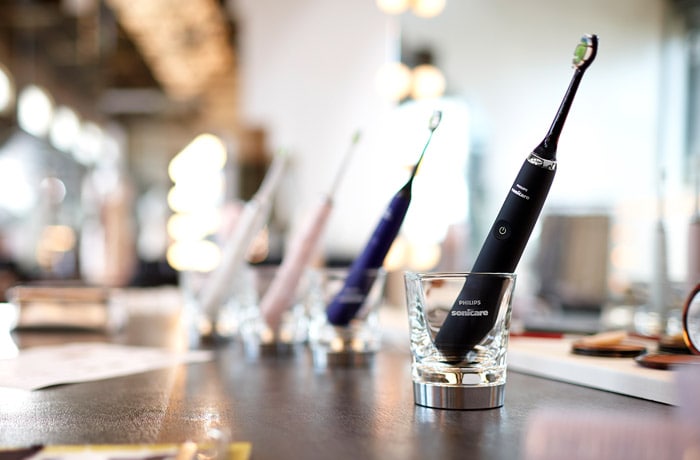Reading time: 5 min
How to clean your hand and electric toothbrush
Good oral hygiene includes not only thorough brushing of your teeth, regular check-up visits to the dentist and professional tooth cleaning, but also regular cleaning of your toothbrush. Bacteria accumulate on the bristles, the spread of which is further favored by the humid climate in the bathroom. In order to ensure the optimal oral health of your family, we will show you here how to brush properly with a hand brush and an electric toothbrush. In addition, we answer important questions about toothbrush cleaning. For example, how often you change your toothbrush and what you should keep in mind when storing your toothbrush.
Cleaning an electric toothbrush: Here's how it works
Your electric toothbrush can be effectively cleaned with very little time. With these tips, you can brush your electric toothbrush properly and make sure your teeth are brushed optimally: By the way, cleaning your electric toothbrush is not only important for hygienic reasons. Limescale deposits and other dirt can permanently impair the functionality of your device – this applies to all types of electric toothbrushes, such as rotating-oscillating devices and sonic toothbrushes.
Rinse the brush head with clear water after each use. So, you eliminate not only toothpaste residues, but also germs.
Not only the brush head, but also the handpiece of your electric toothbrush should be cleaned regularly, otherwise limescale deposits and other dirt will settle on it:

How often should you change your toothbrush?
How often you should change your toothbrush (or the brush head of the electric toothbrush) depends on the type of bristles, the use and your brushing technique. In general, however, when the bristles of your toothbrush begin to look frayed, it is time to change the brush head or toothbrush – but at the latest every three months.1
Philips Sonicare brush heads have blue indicator bristles. If these fade, it's time for a change. In addition, newer brushes have a brush head change indicator. After 3 months, the toothbrush indicates via a signal light that changing the brush would make sense.
What you need

Philips Sonicare 3100 series Sonic electric toothbrush
HX3671/13
Goodbye manual toothbrush. Hello Sonic technology.
Sonic technology combined with our brush action gently removes plaque up to 3x better* than a manual toothbrush.
See all benefits-
- 2-pack
- Standard size
- Click-on
- BrushSync mode pairing
Rs.1,195.00*









